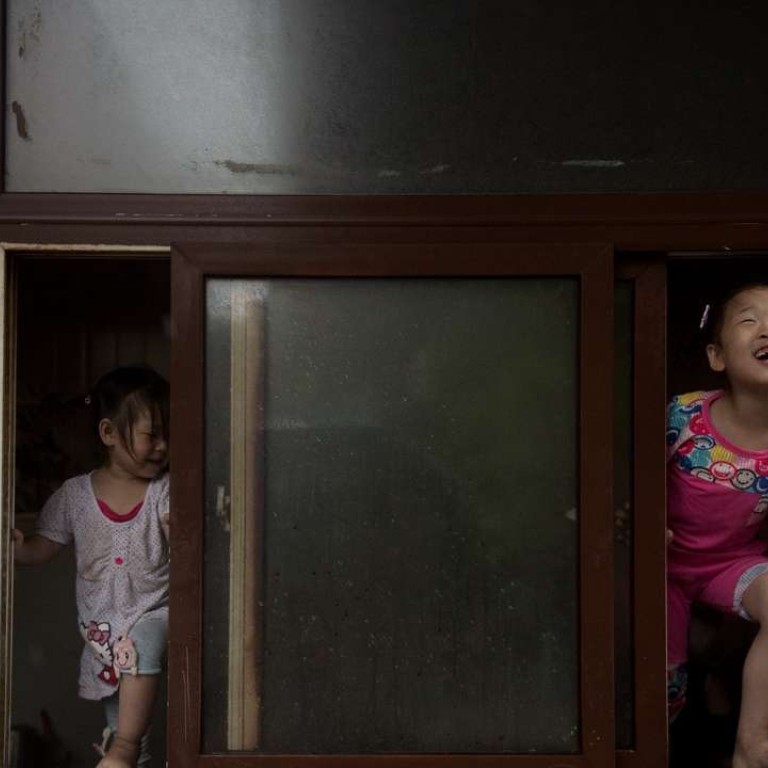
China’s ‘missing women’ theory likely overblown, researchers say
Births of many children, especially girls, were not registered as their parents were trying to avoid punishment under one-child policy, study shows
The commonly cited figure that about 30 million fewer girls than boys were born in China due to decades of a strict one-child policy might be exaggerated, according to a new study that has found the births of many girls were simply registered much later or not at all.
John Kennedy, associate professor of political science at the University of Kansas and Shi Yaojiang, from Shaanxi Normal University in China, combed birth data and found that a combination of late registrations and unreported births could account for a large portion of the so-called missing girls reported previously in Chinese sex ratio at birth statistics.
The researchers compared the number of children born in 1990 with the number of 20-year-old Chinese men and women in 2010. The cohort, they discovered, grew by about 4 million people over two decades. The additional people included about 1 million more women than men.
“If we go over a course of 25 years, it’s possible there are about 25 million women in the statistics that weren’t there at birth,” Kennedy said in a statement on the website of the University of Kansas.
The researchers’ work started in 1996 when they interviewed a villager in Shaanxi province who referred to one of his two daughters as the “non-existent one”, meaning whose birth was not officially registered and therefore did not legally exist. People whose births were not registered cannot obtain a “household registration” that confers the right to services such as health care and education.
In their paper, published in the latest edition of the journal China Quarterly, Kennedy and Shi offer a political explanation, rather than an academic demographic one, for the phenomenon: local government officials turned a blind eye to additional births to maintain social stability in their communities. Local governments would under-report “out of plan” births that ultimately influenced the national population statistics.
Other mainland demographers have found a similar pattern. Shanghai-based researcher Liang Zhongtang found that, from the 1980s when the one-child policy came into force, some parents who had a second child who was a girl simply did not tell the authorities. These children were not initially recorded in the census but would be included in official figures later in life as they grew older and required social services, such as health care or education. Such services require a person to have a “household registration”, which in turn requires a birth certificate.
Liang said that some girls were not registered at birth but showed up in later censuses. “The sex imbalance exists, but not as badly as statistics show. Some girls were not registered but they existed. The sex ratio imbalance is not so severe years later when they grow up,” he said.
Throughout three decades of the one-child policy, China allowed rural residents to have a second child if the first born was a girl but not if it was a boy – which was colloquially referred to as the 11/2 child policy. Parents who violated the strict birth-control policy faced hefty fines and could even lose their jobs if they worked for the government or state-owned companies.
The one-child policy was partly relaxed in 2012 and abandoned last year to allow all couples to have two children as China faces a greying population and projected labour shortages in future.
Family planning officials in Beijing have blamed a traditional Chinese preference for boys for selective abortion, especially under the pressure of the one-child policy, which resulted in China having the world’s most skewed sex ratio at birth.
The official ratio started to soar in 1982, from 108, when the one-child policy became strictly enforced and peaked nationally in 2004 with 121 boys born to every 100 girls. In some provinces the ratio was as high as 130.
It then declined to 113 last year, but demographers believe the normal range would be about 107.
Chinese media estimate there are 13 million people in China with no household registration. Beijing announced in January that police would allow household registrations to be provided to residents whose births were not registered to avoid punishment at the time for breaching the one-child policy.

